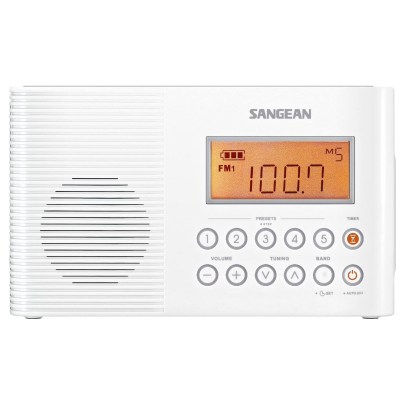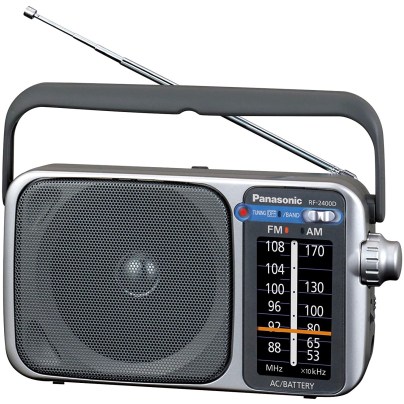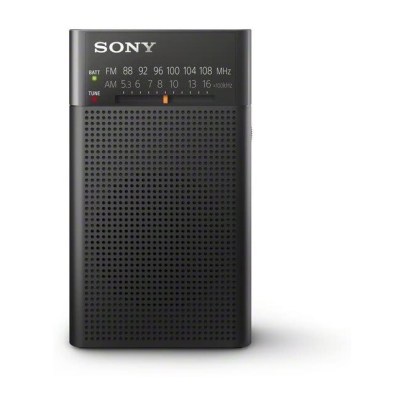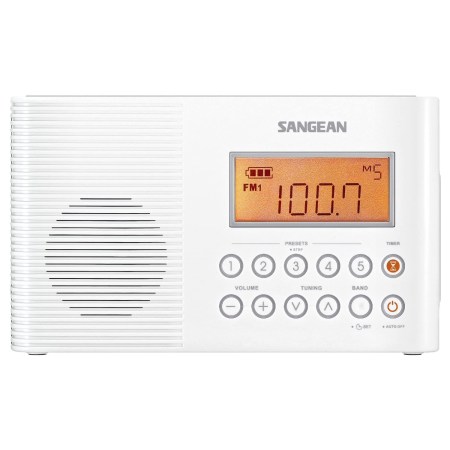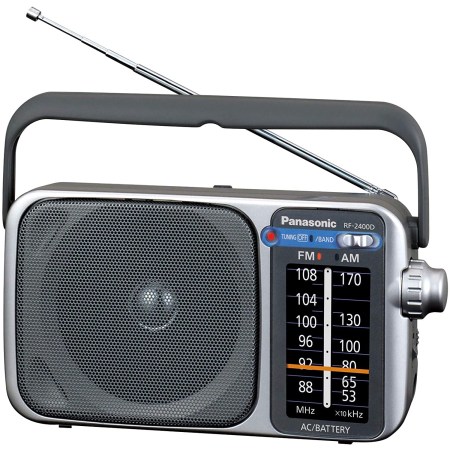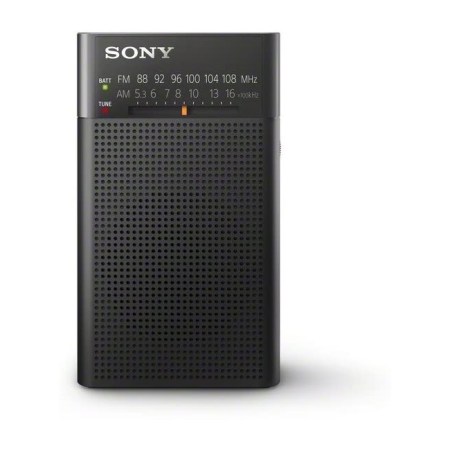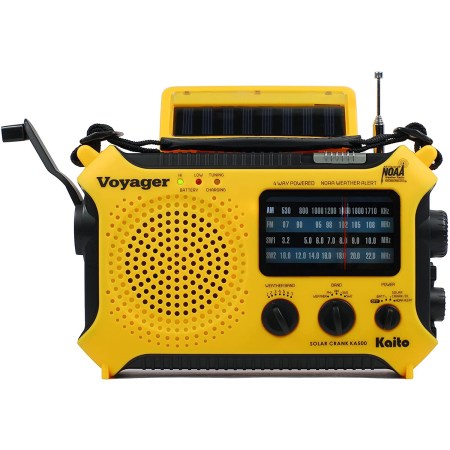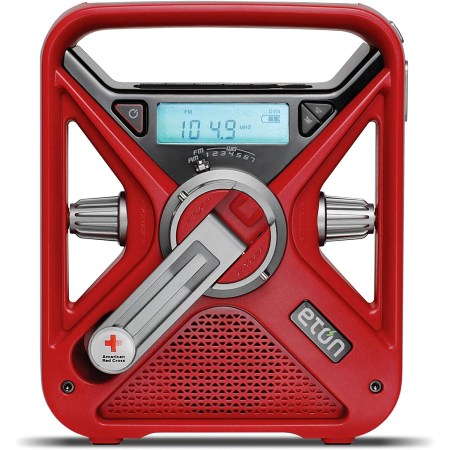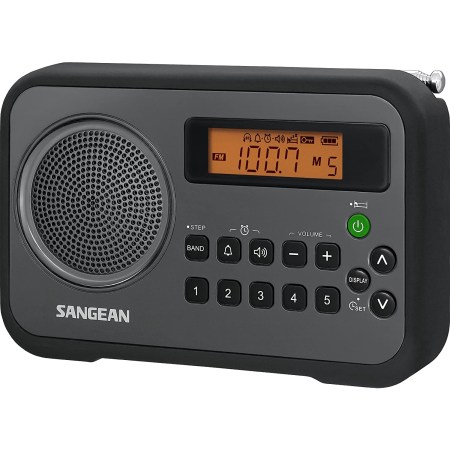We may earn revenue from the products available on this page and participate in affiliate programs. Learn More ›
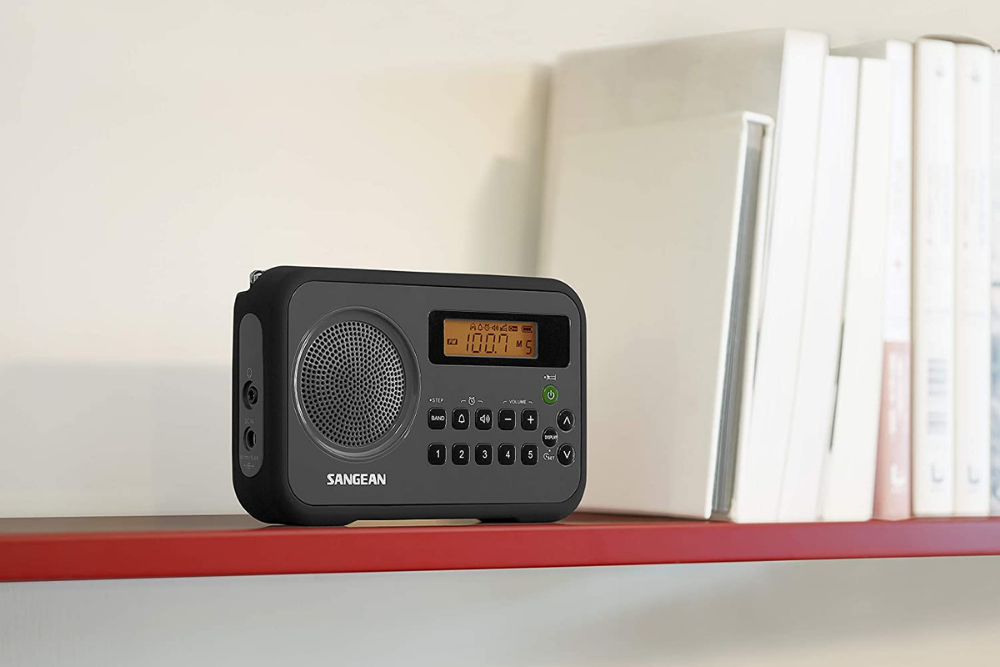
A reliable AM radio is a convenient way to stay updated with the local news and weather. It also can double as an essential emergency device—especially as the frequency of extreme weather events continues to rise. Although often viewed as old-fashioned, AM radios offer an affordable, convenient way to tune in to your favorite music or talk show program.
A quality AM radio doesn’t require a lot of bells and whistles. Still, it should be durable, have long-lasting power, quality sound output, and the ability to receive far-reaching radio broadcasts.
This guide explores the factors to consider when shopping for an AM radio and reviews several of the top-rated options on the market today.
- BEST OVERALL DIGITAL: Sangean PR-D18BK AM/FM/Portable Digital Radio
- BEST OVERALL ANALOG: Panasonic Portable AM / FM Radio
- BEST BANG FOR THE BUCK: Sony ICFP26 Portable AM/FM Radio
- BEST EMERGENCY: Kaito KA500 5-way Emergency AM/FM/SW/NOAA Radio
- BEST FOR CAMPING: Eton American Red Cross Emergency NOAA Weather Radio
- BEST WATERPROOF: Sangean Portable AM/FM/Weather Alert Waterproof Radio
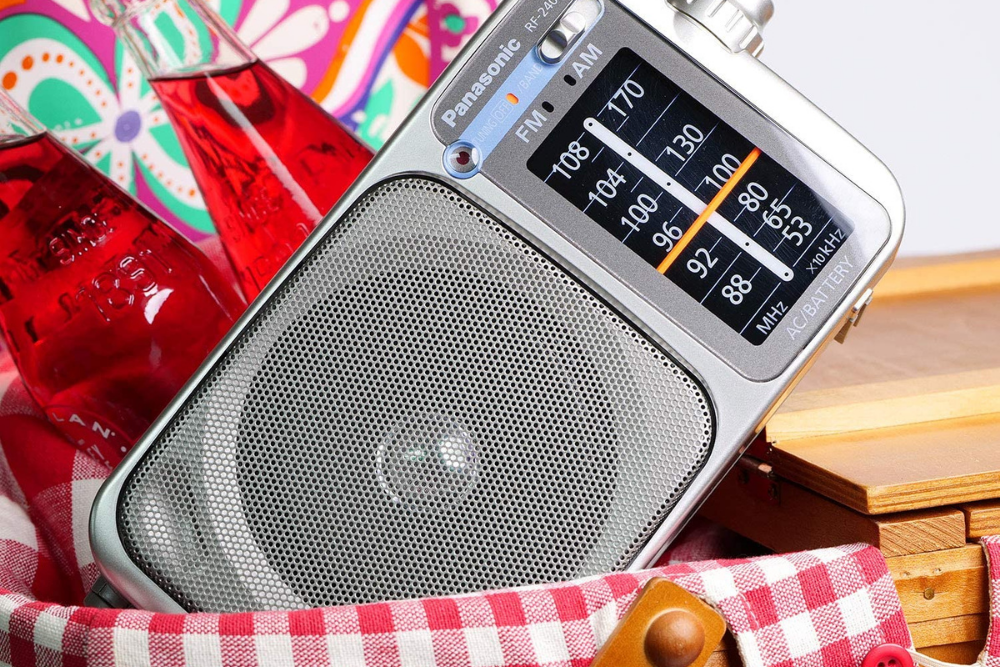
What to Consider When Choosing the Best AM Radio
Before purchasing an AM radio, consider several factors, including its portability, analog or digital input, power rating, reception, and more. The top shopping considerations for choosing the best AM radio for essential news and weather updates follow.
Type
Several different types of AM radios are available. Some are intended solely for emergency purposes, while others are simply for listening to AM broadcasts. Varieties include:
- Emergency and weather radios contain an automatic alarm system that alerts users to severe weather conditions. Their excellent reception allows broadcasts from essential services like the National Oceanic and Atmospheric Administration (NOAA). Emergency AM radios sometimes include built-in flashlights, charging stations, renewable power sources, and more.
- Clock radios provide the benefits of an alarm clock and a radio in one.
- Shower radios are waterproof battery-powered devices that are safe to use in the bathroom or other wet environments.
- Pocket radios allow for easy transport in a pocket, bag, or backpack.
Portable vs. Tabletop
A tabletop AM radio must be plugged into an outlet, while other portable radios are hand cranked or powered by solar energy or batteries. Some tabletop AM radios include CD players, power generators, or larger speakers.
Analog vs. Digital
Analog is the traditional frequency signal first used over a hundred years ago. Both AM and FM radios utilize analog signals, which are moving sine waves that transport information via a transmitter to a receiver. While analog radios are easy to use and less expensive, their signals are sometimes disrupted by weather or competing radio waves, resulting in static and less reliability.
Digital, a newer signal, is considered superior to analog, because it provides a stronger, more reliable signal, better sound quality, increased reach, and the ability to pause and rewind. However, if a digital signal becomes too weak, the radio can lose the feed entirely. Digital signals may also experience a lag and often require more power than analog.
Power
The most common power sources are electrical outlets or rechargeable or single-use batteries. Some models, however, are powered by solar energy or a hand-crank power generator.
Some AM radios include an AC adapter in addition to batteries, making them both portable and stationary.
Radio Channels
Fewer radio stations are available for AM than FM. However, some emergency broadcasting services, weather and sports reports, talk shows, and other entertainment programs use AM radio waves. Accessible AM radio programs depend on the location and availability of AM stations. Many AM radios also receive FM transmissions.
Sound Quality and Volume
Sound quality and volume are determined by the size of the internal speakers and the programmed range of the volume dial or settings. Many AM radios don’t transmit at an extremely loud volume, but they’re still loud enough for comfortable listening—a sound output of 75 decibels or more. The volume is adjustable, often through the use of buttons or a volume dial.
Reception
AM radios receive analog signals that use amplitude modulation transmission. AM transmissions are considered a bit outdated because they can sometimes experience reception issues, such as static, interrupted broadcasting, or the loss of signal altogether.
AM radio reception depends on the location of the nearest AM radio station and the capability of the built-in antenna to capture the signals. However, users can improve the reception of an AM radio by moving the radio closer to a window or away from appliances that may interfere with the signal.
Additional Features
Many AM radios offer additional features such as a built-in flashlight, a charging station, or a rechargeable power source, such as a solar panel or hand crank. Some models also may provide an alert system that automatically sounds when bad weather or a severe storm is on the way. Other additional features include a waterproof shell, USB port, and CD player.
Our Top Picks
These top picks were selected based on all these essential shopping considerations, in addition to overall quality and price. They meet a wide variety of needs, including emergency use, at-home listening, or serving as a reliable travel companion. Keep reading to discover some of the best AM radios on the market.
Best Overall
Sangean PR-D18BK AM/FM/Portable Digital Radio
See ItWith a protective bumper and durable exterior, Sangean’s digital AM/FM radio is made to take on the go. For power, it requires four AA batteries. The radio weighs less than 13 ounces, making it ideal for camping, tailgating, and other outdoor use. It comes in four two-toned color options.
Additional features include 10 station presets (five AM and five FM), an easy-to-read LCD screen with backlight, adjustable tuning and auto seeking, dual-alarm options (radio or buzzer), a snooze button, battery life indicator, and a built-in headphone jack.
Best Overall Analog
Panasonic Portable AM / FM Radio
See ItPanasonic’s AM/FM radio is powered by either four AA batteries or the included AC adapter. The lightweight, portable radio weighs just a pound. It has a convenient carrying handle for easy transport around the house or while traveling.
A large digital tuning dial paired with a fluorescent orange pointer on the front of the radio ensures accurate tuning, even in the dark. This radio also boasts an AM/FM antenna, a built-in headphone jack, a 10-centimeter speaker, and an adjustment dial to fine-tune the volume.
Best Bang For The Buck
Sony ICFP26 Portable AM/FM Radio
See ItFor a quality purchase without a high price tag, look to the Sony portable AM/FM radio. Weighing less than 7 ounces, this device is lightweight and compact. The small vertical pocket radio features a telescoping antenna to better capture radio signals and a hand strap for increased portability.
This analog radio can receive both AM and FM signals, and it includes an LED battery indicator to let users know when the two AA batteries are low on power. It also has a dedicated headphone socket.
Best Emergency
Kaito KA500 5-way Emergency AM/FM/SW/NOAA Radio
See ItWhen an emergency arises, the Kaito emergency weather radio can receive various transmissions, including AM and FM signals. It has seven preset weather channels that broadcast forecasts from the NOAA and the PEAS (Public Emergency Alert System). Weighing just 1.4 pounds, this analog radio is portable and available in five colors.
Power this radio in one of six ways: hand-crank generator, solar panel, AA battery compartment, 5V USB input, AC adapter, or via a built-in rechargeable battery pack. Other important features include its 14.5-foot telescoping antenna, impact- and water-resistant plastic shell, and the ability to charge cell phones and other devices. Additionally, a weather alert feature can automatically play weather emergency broadcasts.
Best For Camping
Eton American Red Cross Emergency NOAA Weather Radio
See ItThe American Red Cross emergency NOAA weather radio by Eton features rechargeable batteries, a solar panel, and a hand turbine power generator. It boasts an alert function that automatically broadcasts emergency weather alerts issued for the area.
The radio weighs less than 1 pound. It can receive AM, FM, and NOAA digital radio signals via the attached telescoping antenna. The radio also includes an LED digital display, alarm clock, LED flashlight paired with a red flashing beacon, and a USB port for device charging.
Best Waterproof
Sangean Portable AM/FM/Weather Alert Waterproof Radio
See ItUsers can listen to the radio and catch important weather updates in the shower or the rain with this waterproof AM/FM radio by Sangean. It features 25 radio presets: 10 FM, five AM, and five WX, in addition to all seven NOAA weather channels. The analog radio weighs just over 2 pounds, so it’s easily portable.
This radio features a digital clock with a backlit LED display, auto-seek functionality, adjustable timers, and both an LED flashlight and a buzzer for emergencies. A built-in swivel handle makes the radio convenient to carry, and it includes both a hanging strap and wall-mounting hardware for semipermanent installation. It operates on two D batteries.
FAQs About AM Radios
After learning about these top picks for the best AM radios, you may still have questions. Below are answers to some of the most frequently asked questions about choosing and maintaining an AM radio.
Q. What is the difference between an AM and FM radio?
AM radios receive amplitude modulation signals, whereas FM radios receive frequency modulation transmissions.
Q. What is the difference between a weather radio and a regular radio?
A weather alert radio automatically plays a weather emergency broadcast to alert you that severe weather is in your area. A regular radio does not have this feature.
Q. What is the best type of radio to have in an emergency?
In an emergency, you need a radio that can work without an electrical outlet, has a durable exterior, and offers survival features such as a weather alert system, a flashlight, and a cell phone charger. The Kaito KA500 5-way Emergency AM/FM/SW/NOAA Radio, one of the best emergency AM radios available, provides these important emergency features.
Q. How do I get better AM radio reception?
To improve AM radio reception, place the radio in a window, install a taller antenna, and turn off appliances that may interfere with AM radio signals. The quality of AM reception also depends on the distance between the radio and the broadcasting station.
